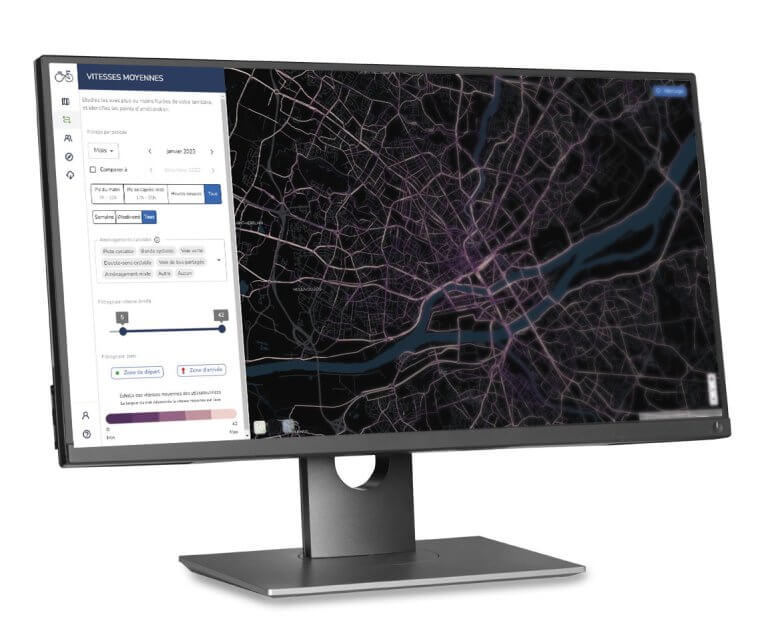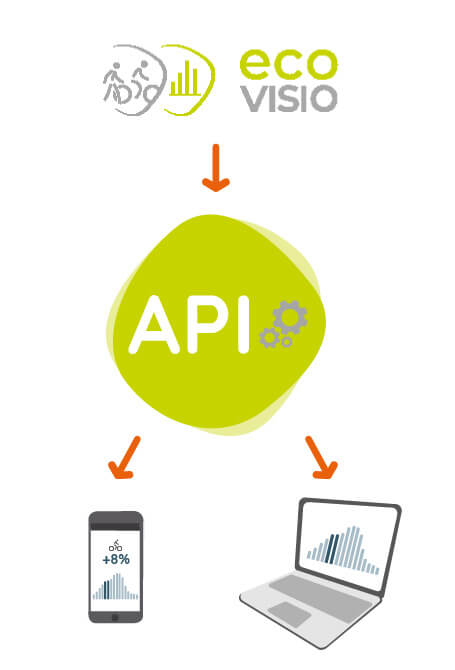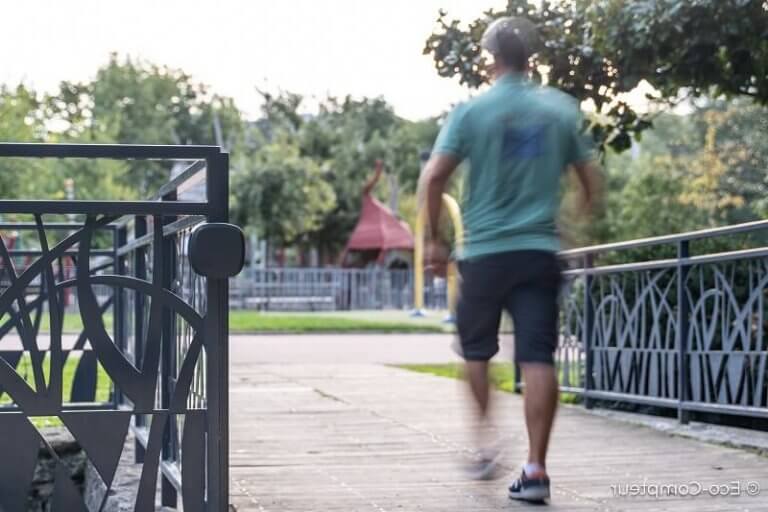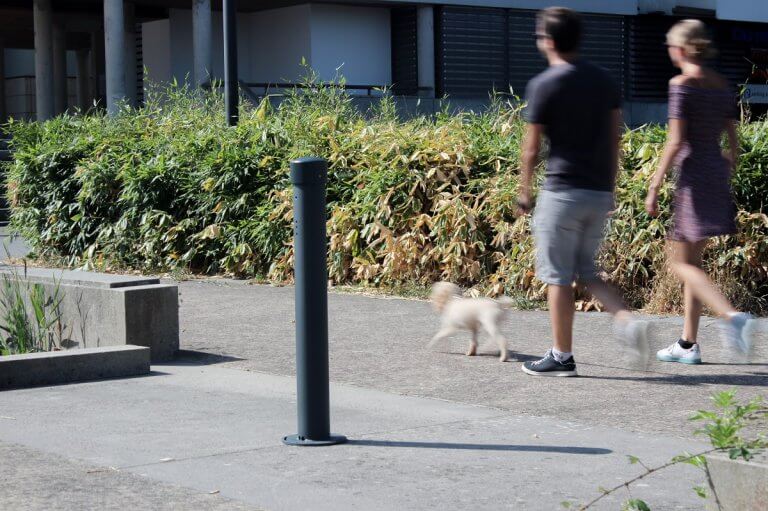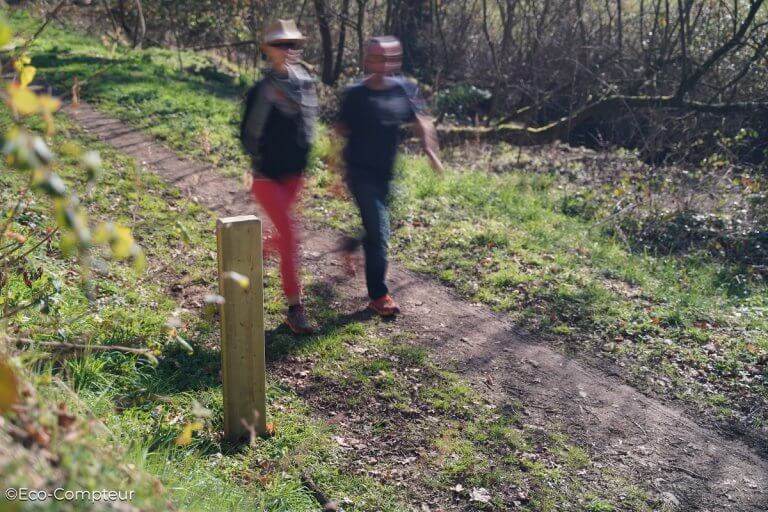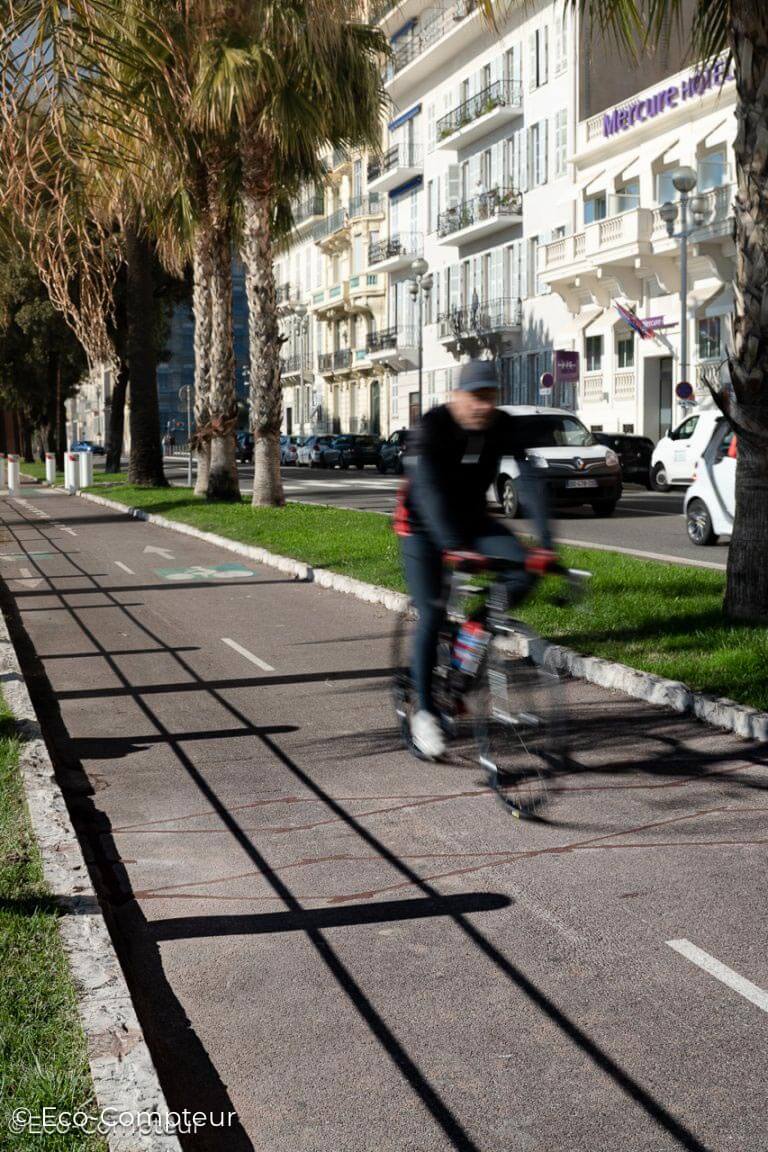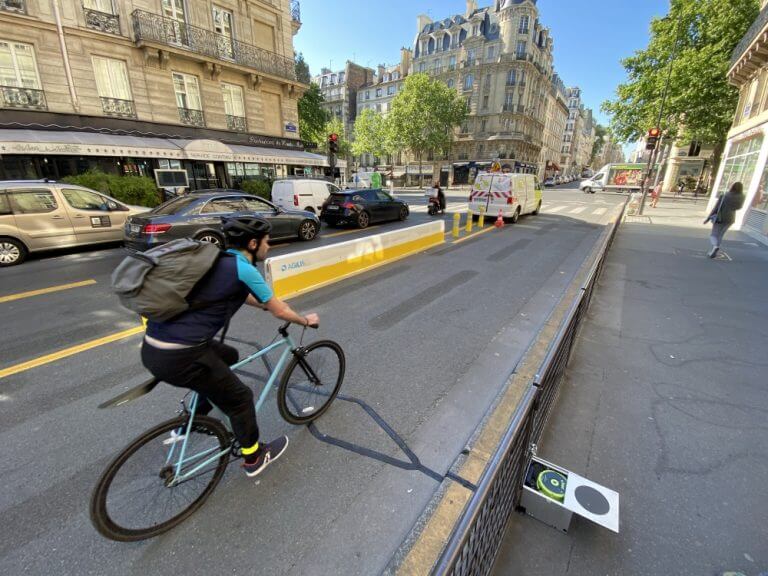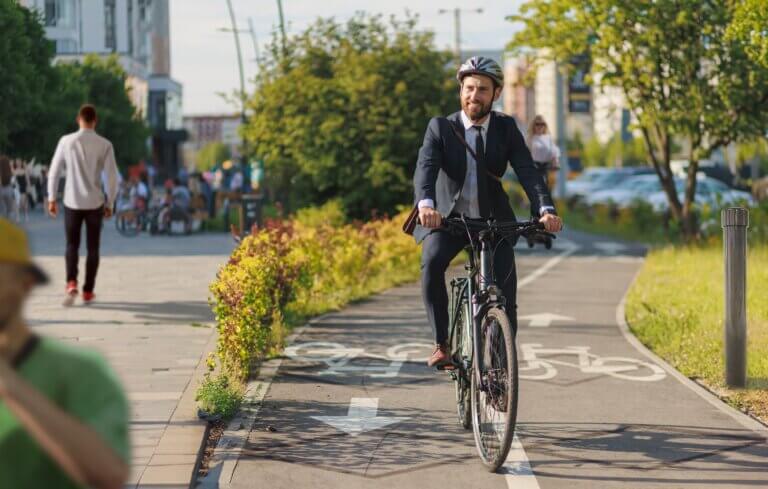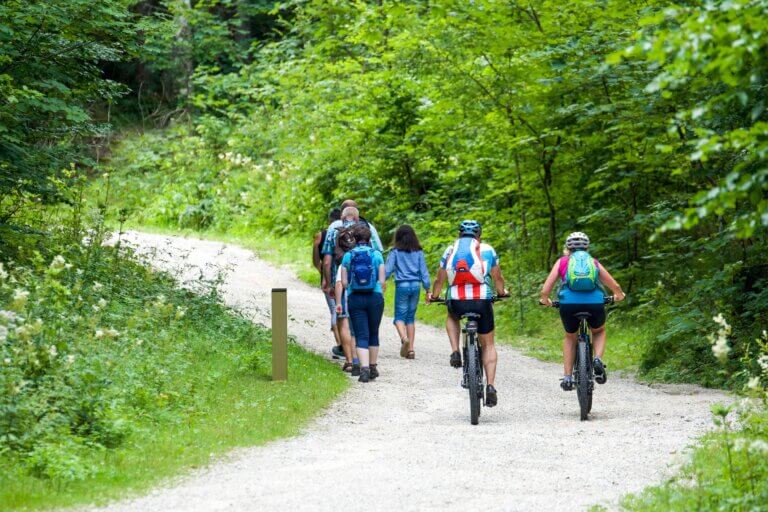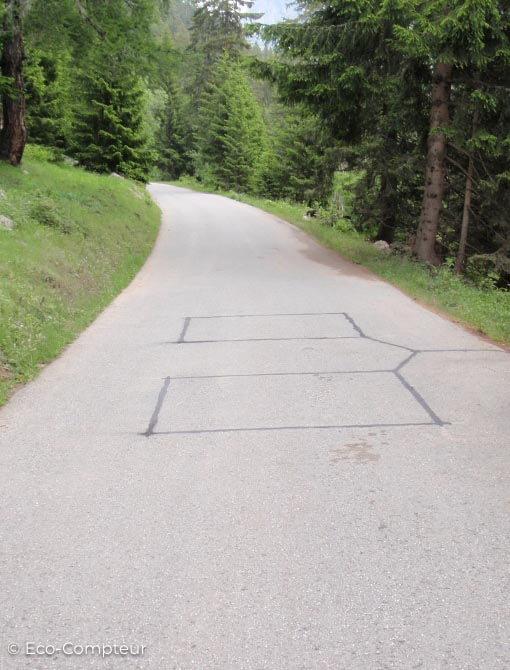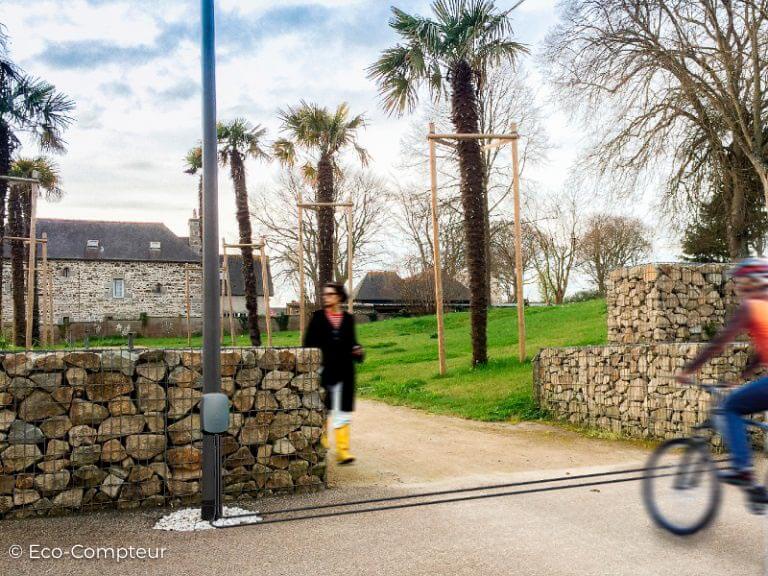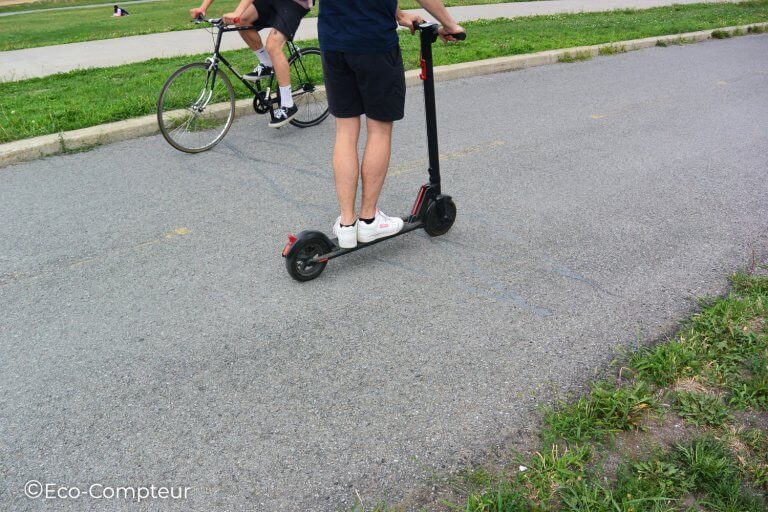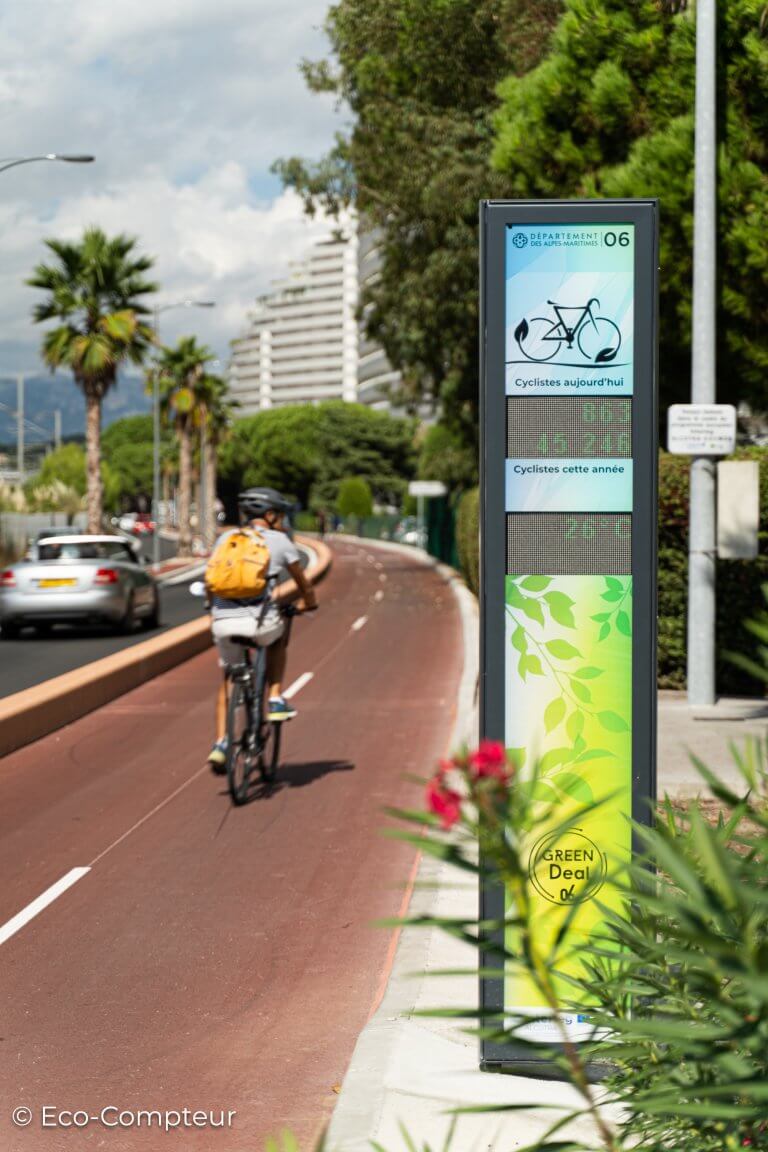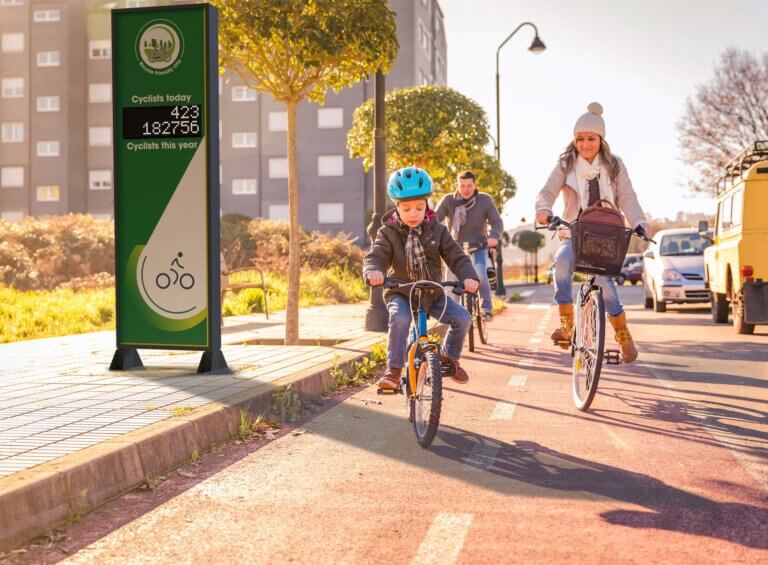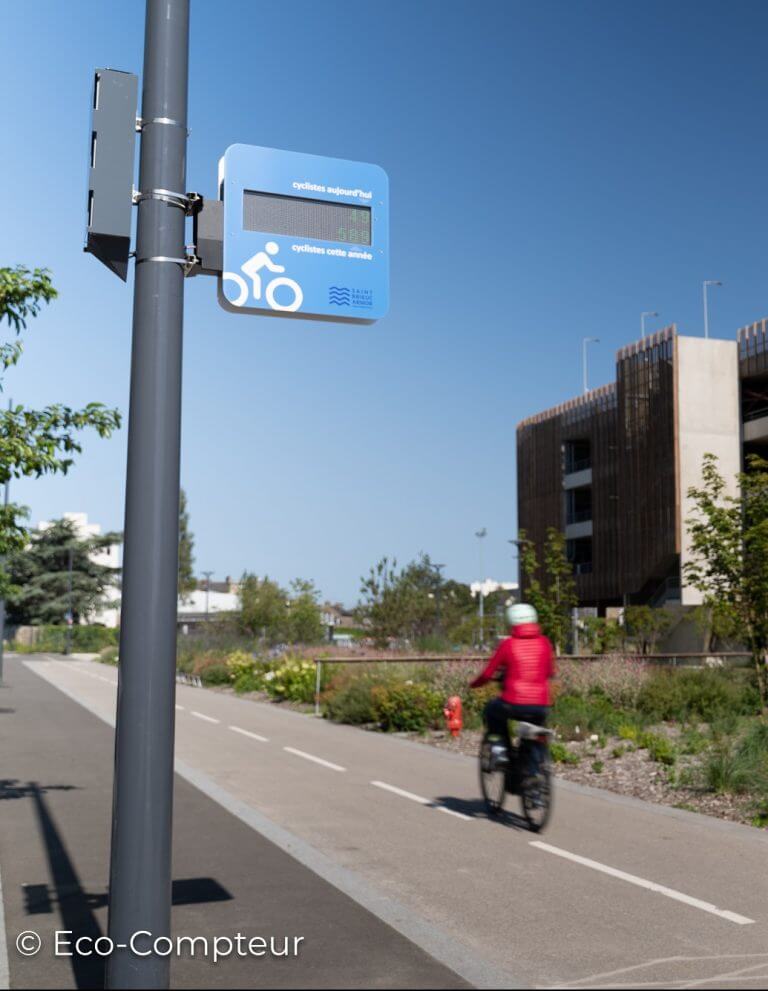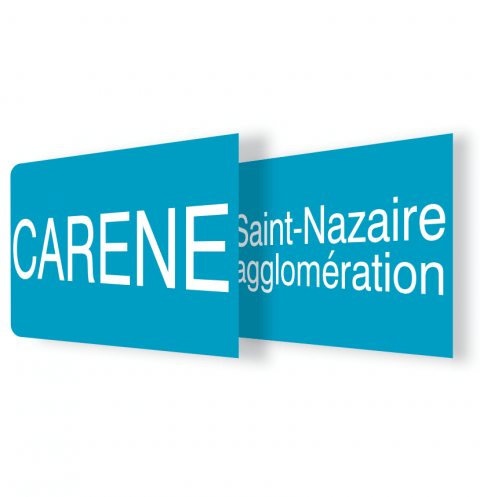Hard- and soft-measures of cycling in Gdansk – key factors to the city’s cycling success
Gdansk has a consistent network of cycleways, cycle routes and bike-friendly streets, the total length of which is over 685 kilometres. The network is primarily based on over 120 kilometers of separated cycle ways. Those are mostly red-coloured asphalt-surfaced bi-directional cycle ways constructed on the side of the road. Their width varies from 2,5m to 4m. Another element of the network are separated on-street bicycle lanes (7,3 km). In some areas there are mixed-use zones for pedestrians and cyclists (37,7 km).
The rest of the network are made of bike-friendly streets in calmed-traffic zones, with maximum speed of 30kph or lower. Practically all one-way streets there have counterflow cycling allowed, making travelling by bicycle much more convenient and simply faster than by cars. Additionally most intersections have the right hand priority for better safety.
Anti-theft safety of bicycles is supported by use of the bicycle parking facilities standards in city investments. The only kind of a bicycle rack supported, recommended and installed by the city, is a rack is the shape of inverted U, which enables to lock one’s bicycle by the frame. In various campaigns the city have promoted locking bicycle with the use of a solid U-clock.
Multimodal trips of inter-districts or of regional nature with the use of the bicycle and the rail is supported by a network of Bike&Rail and Bike&Ride facilities. Additionally, all primary and most secondary schools in Gdansk have high-quality bike parking facilities funded by the city. Those latter facilities definitely help to realise probably the best cycling campaign for schoolchildren in the world, named Cycling May Campaign.
Since 2013, the Cycling May Campaign, has encouraged children between 3-13 years old, their caretakers, teachers and school staff to arrive to school by bicycle during the month of May. It effectively uses the elements of rivalry between individuals and schools and co-operation on class / grade level. The campaign has had a massive effect on increasing the popularity of cycling among schoolchildren and their caretakers. Prior to the first edition of the campaign, very few kids travelled to school by bicycle, while the latest edition saw on average over 50% of all trips of that nature done by bicycle. Even the best prepared schools in terms of bike parking facilities could hardly cope with the number of bicycles parked outside, exceeding 400 vehicles on many occasions. It should be noticed that the drop-out after May is much lower than initially expected which proves that the campaign has a lasting effect. What is important it also has had a sizeable desired effect on adults, many of whom accompany their children to school and then continue on by bicycle to work.
The Cycling May Campaign has now been licensed to other Polish cities. This year’s edition saw 47 cities, 838 schools and kindergartens and 178255 participants. All with the most positive effect on urban mobility, air quality and health benefits.
The volume of cyclists and the positive effect of cycling promotion is carefully measured by the system of bike counters. 28 devices have been installed in various parts of the city so far. They record the number of cyclists during the day, month and since the 1st January each year. The results of the counting are sent to servers and shown to the public on municipal official cycling website of www.rowerowygdansk.pl (so far in Polish only) in open-data formula. Two locations have on-street displays. The measurement system helps in managing and planning traffic solution and provides data for measuring the effectiveness of infrastructural and promotion projects.
There are many small-scale infrastructure solutions across the city to accommodate the comfort and easiness of cycling. Among them are:
- a) foot and hand rails in waiting-for-green areas in intersections;
- b) mirrors for better visibility in difficult points;
- c) raised and coloured bike crossings that retain the cycle way continuity in order to send a signal to drivers that they should be extra careful upon driving across the bike way.
- d) subtle grates across the cycle ways in the vicinity of pedestrian crossings to inform cyclists of potential danger and the necessity to reduce speed;
- e) cycle ways drops continuity for a few meters in areas where there are many pedestrians, which signals cyclists that they should be twice careful of pedestrians who have priority.
An excellent example of innovative on-street bicycle infrastructure is Wojska Polskiego / Wita Stwosza street. It stretches for about 2,8 kilometres in the north part of the city, lying close to University of Gdansk. There, a two-lane street was converted into a lane for cars and an ample lane for bicycles. The bike lane’s width exceeds 3m in many sections, making it one of widest one-direction bike lanes in Europe. At intersections there are filtration lanes and bike boxes for safely turning left, and the green light for cyclists starts seven seconds earlier than for cars. There is also optional German-style way of left turning for extra safety. All those infrastructural solutions combined in that street make an cycle-friendly environment seen nowhere else in Poland or even in other parts of Europe.
Another example of excellent cycling infrastructure is a 4-m wide cycle highway along the sea shore, leading to Sopot, another city north. The cycle highway guarantees quiet, safe and super-pleasant experience for commuter cyclists, and doubles as a recreation destination on weekends and good-weather afternoons.
Gdansk has wonderful city bike maps. It has been issued yearly for over a decade now. It is distributed at no charge among inhabitants and tourists. The total circulation exceeds 300 thousand paper copies. In addition, the latest issue, updated monthly, is published in the PDF format on webpage of rowerowygdansk.pl. The map itself is published in Polish, English, German and Russian. The content of the map, distinguished among other such publications by its richness and precision, includes all types of cycling infrastructure, both for travelling and bike parking, bike friendly-streets, counterflow ride possibilities, bike shops, cycle counters, repair and tyre-pump stations and more. The data and spatial data used for the map creation is ready for other uses, e.g. coding of biking application.
Also:
- Gdansk has approved standards for cycling infrastructure, obligatory for all city investments.
- The city has completed its first bicycle policy audit BYPAD in 2010. One of its results was the creation of Active Mobility Unit, a team responsible for soft- and hard-measures on cycling and walking. This year the Bypad is being repeated.
- Gdansk has got not only a cycling officer but a 10-person strong Active Mobility Unit, taking care of cycling and walking and carrying on the EU co-funded projects.
- The tender procedure for public bike scheme has started in March 2018. If successful, Gdansk and 13 other nearby municipalities and communes will have a common, modern, next-generation system by the end of this year.
- Gdansk has won the European Cycling Challenge three times (came second last year in one category and first in another). That campaign has always been combined here with Bike to Work campaign.
- Gdansk has completed a number of EU co-funded projects supporting cycling, including Citvitas Mimosa Plus, Cycle Cities, abc.multimodal, CentralMeetBike. Recently, the city has started such projects as: School Chance (cycling to school), Solez (low emission zones and low-traffic zones), BSR Electric (e-bikes promotion), Sohjoa Baltic (autonomous vehicles), cities.multimodal (new technologies for cycling promotion).
- Every year, mostly in September, there is the Active Mobility Congress organized in Gdansk. This year it will be the 9th edition of the event, which is arguably the biggest of its kind in Eastern Europe, hosting ca. 350 participants.
- Cycling is firmly grounded in cities official strategies.






